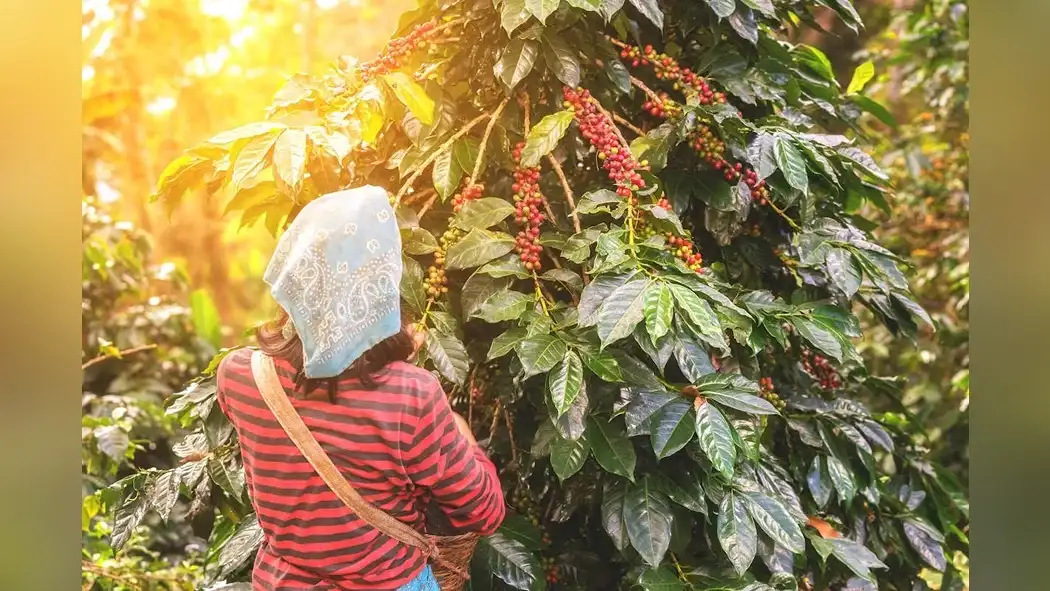Ever wondered if there's a perfect recipe for growing robusta coffee? You're in luck! This comprehensive guide is here to provide you with all the essential information you need to cultivate robusta coffee in ideal conditions.
From altitude requirements to soil quality, this guide covers it all in a straightforward and easy-to-understand manner.
Whether you're a seasoned coffee grower or just starting out, understanding the ideal growing conditions for robusta coffee is crucial for a successful harvest.
So, let's dive in and explore the factors that contribute to the thriving growth of robusta coffee plants.
Altitude Requirements
For robusta coffee plants, you should aim to grow them at altitudes between 200 meters and 800 meters above sea level for optimal results. High altitude regions provide the ideal climate for robusta coffee cultivation. The cooler temperatures and increased precipitation at higher elevations create the perfect environment for these coffee plants to thrive. At low altitudes, the climate may not be as suitable, and the coffee plants may struggle to develop properly.
Mountainous regions offer the optimal climate for robusta coffee cultivation. The combination of altitude, temperature, and precipitation in these areas creates the perfect conditions for the plants to flourish. The cool, misty climate found in mountainous regions helps to slow the growth of the coffee cherries, allowing them to develop more complex flavors.
Temperature Range
Once you have identified the ideal altitude for robusta coffee cultivation, it's essential to consider the temperature range that best supports the growth of these plants.
Robusta coffee thrives in temperatures ranging from 24°C to 30°C (75°F to 86°F), making it crucial to provide a climate within this range for optimal growth. Consistent temperatures within this range are essential for the robusta coffee plant's development, flowering, and fruit maturation.
Understanding the climate preferences of robusta coffee is vital for ensuring an ideal growing season. Consistent warmth is necessary for the plants to flourish, but they also require a distinct dry season to promote flowering and fruiting. This combination of warmth and a dry period helps create the perfect conditions for robusta coffee to thrive.
The growing season for robusta coffee typically aligns with these climate preferences, with the plants exhibiting the best growth and productivity under these conditions. It's important to monitor and maintain the temperature range within the specified limits to support the robusta coffee plants throughout the growing season.
Rainfall and Humidity Needs
To support robusta coffee cultivation, you need to ensure adequate rainfall and humidity levels. Robusta coffee plants thrive in regions with a well-defined rainy season and a short dry period. Here are three key points to consider:
- Rainfall: Robusta coffee requires around 80-100 inches of rainfall annually. The distribution of rainfall throughout the year is crucial, with a distinct wet season and a shorter dry period. Consistent and evenly distributed rainfall is vital for the healthy growth and development of robusta coffee plants.
- Humidity Levels: Robusta coffee plants thrive in regions with high humidity levels, ideally between 60% to 70%. Adequate humidity is essential for the optimal growth and productivity of the coffee plants.
- Irrigation Methods: In regions where natural rainfall is insufficient or irregular, implementing effective irrigation methods is crucial. Drip irrigation or sprinkler systems can help supplement natural rainfall and maintain the required moisture levels in the soil.
Considering these factors is essential for successful robusta coffee cultivation, especially in areas with varying climate patterns. Understanding the specific rainfall and humidity needs of robusta coffee plants is crucial for climate adaptation and sustainable coffee production.
Soil Quality
Robusta coffee plants require nutrient-rich soil with good drainage for optimal growth and productivity. When considering soil composition, it's essential to provide a mix that's well-draining and rich in organic matter. A blend of sandy loam and clay soil with a pH level between 6.0 and 6.5 is ideal for robusta coffee cultivation. This composition allows for adequate drainage while retaining essential nutrients.
Additionally, the soil should have good aeration to support root development and microbial activity. Regularly check the nutrient levels in the soil, focusing on nitrogen, phosphorus, and potassium, as these are crucial for robusta coffee growth. Ensuring that the soil contains the right balance of these nutrients is vital for robusta coffee plants to thrive.
Sunlight and Shade Preferences
For optimal growth and productivity of robusta coffee plants, you should consider their sunlight and shade preferences, which play a crucial role in their overall development. Here are the key factors to consider:
- Sunlight Exposure: Robusta coffee plants thrive in direct sunlight. They require at least 6 hours of sunlight daily for optimal growth. When planting, ensure that the area receives ample sunlight and isn't obstructed by shade from nearby structures or trees.
- Shade Tolerance: While robusta coffee plants prefer direct sunlight, they also benefit from some shade, especially during the hottest parts of the day. Providing light shade can prevent the plants from wilting and help maintain moisture levels in the soil.
- Balancing Sunlight and Shade: It's essential to strike a balance between sunlight and shade. Consider using shading techniques such as planting taller shade trees or employing shading nets to regulate the amount of sunlight reaching the plants.
By understanding and managing the sunlight and shade preferences of robusta coffee plants, you can ensure their healthy growth and maximize productivity.
Additionally, proper pruning techniques and a consistent watering schedule, along with effective pest management and disease prevention, are vital for maintaining robusta coffee plants' overall well-being.
Conclusion
So there you have it – the perfect recipe for growing robusta coffee.
With the right altitude, temperature, rainfall, soil, and sunlight, your robusta coffee plants will thrive and produce high-quality beans.
Remember, when it comes to growing robusta coffee, the early bird catches the worm.
So get out there and start cultivating your robusta coffee plants to enjoy a bountiful harvest.
Happy growing!








